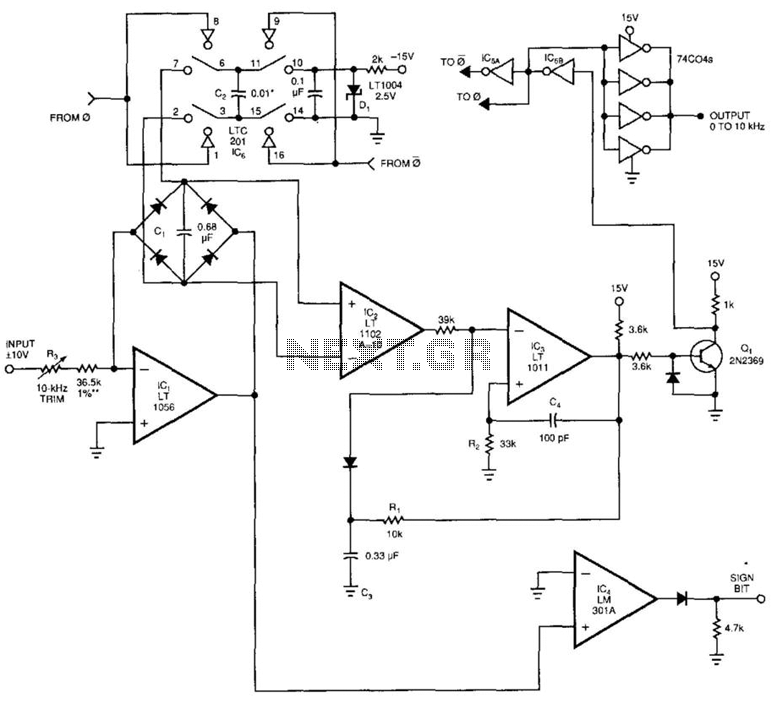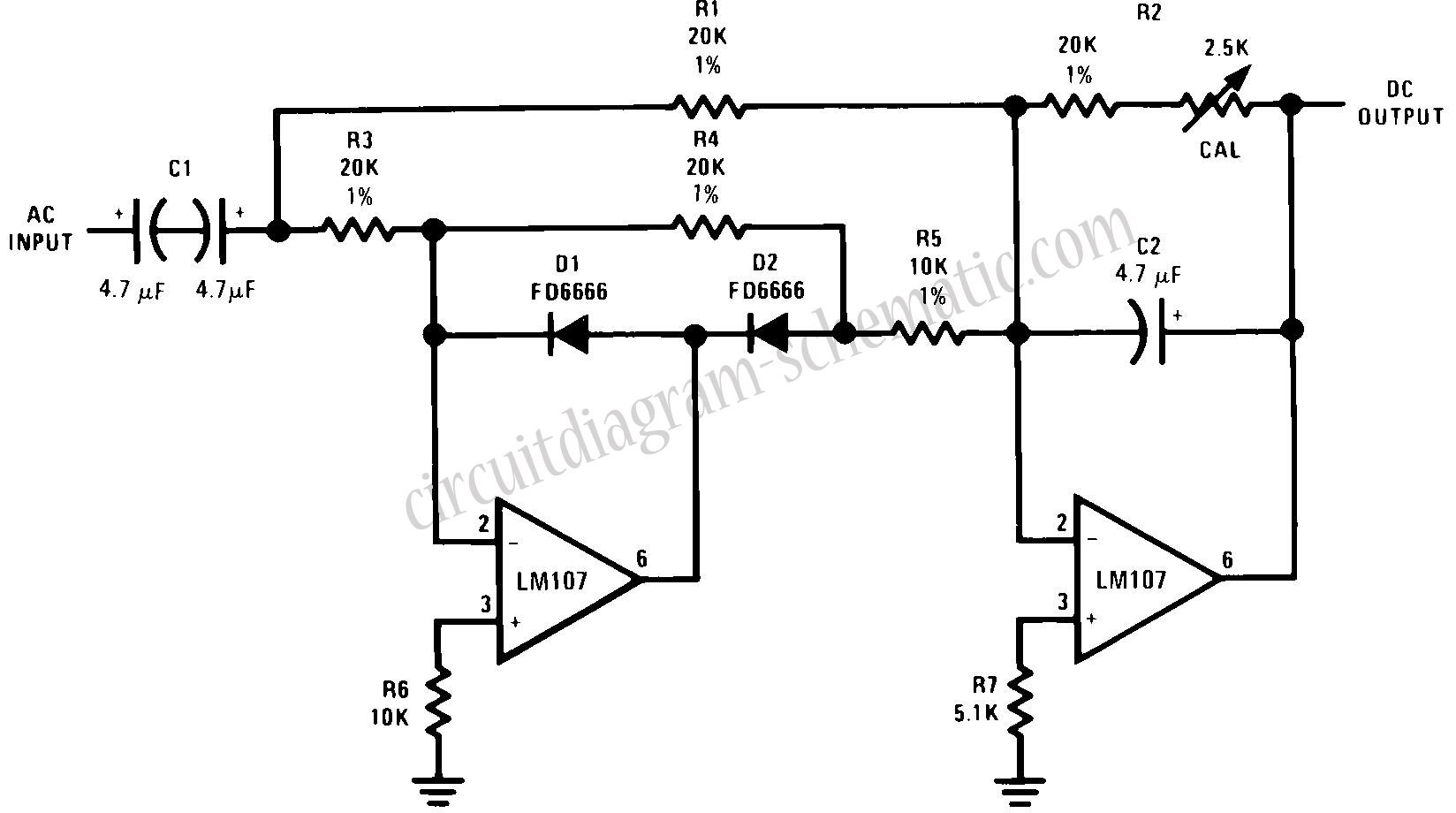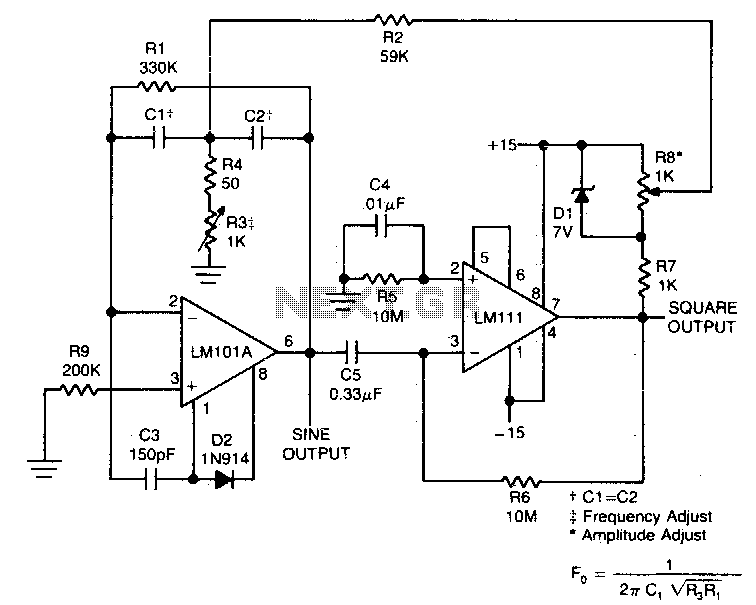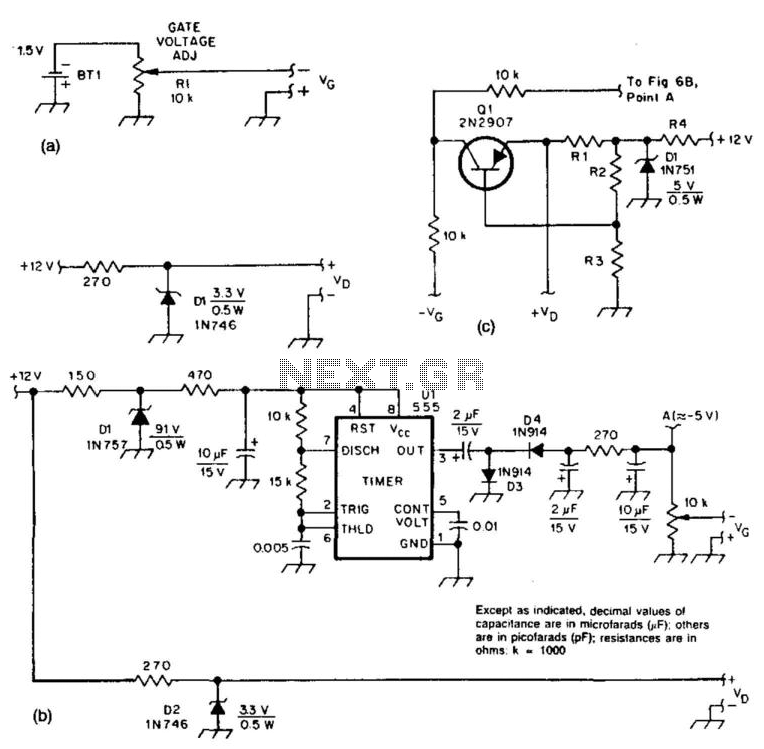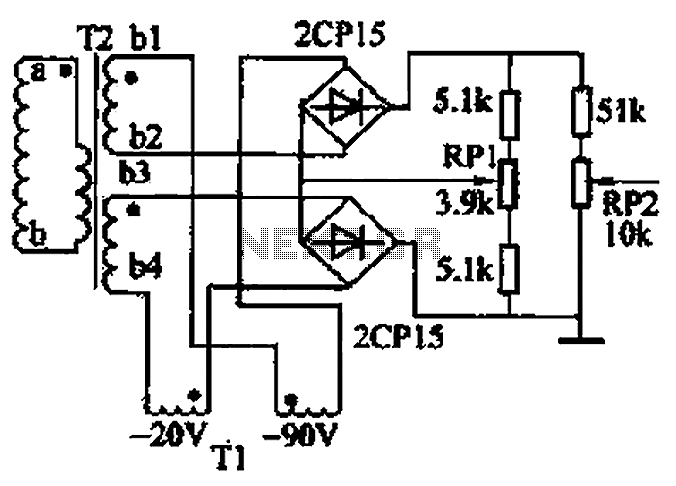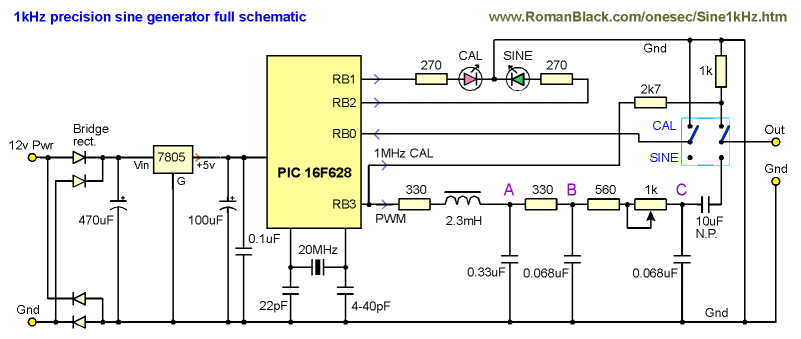
Sine wave-to-square wave converter
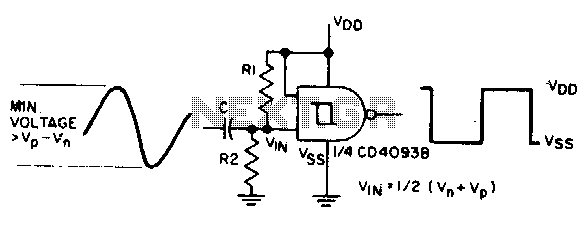
The sine input is AC coupled by capacitor C. Resistors Rl and R2 bias the input midway between Vn and Vp, which are the input threshold voltages. This configuration is designed to provide a square wave at the output.
The circuit utilizes an AC coupling technique through capacitor C, which allows only the alternating current (AC) component of the input signal to pass while blocking any direct current (DC) offset. This is crucial in applications where the input signal may have a DC component that could affect the performance of subsequent stages in the circuit.
Resistors Rl and R2 are configured to set the bias point of the input signal. By positioning the bias point between Vn (the negative threshold voltage) and Vp (the positive threshold voltage), the circuit ensures that the input signal oscillates around a midpoint that facilitates the desired output waveform. This midpoint biasing is essential for achieving optimal signal processing, as it allows the signal to swing fully between the thresholds without clipping.
The output of the circuit is designed to generate a square wave. This is typically achieved through the use of a comparator or a Schmitt trigger configuration. The square wave output is characterized by rapid transitions between high and low states, making it suitable for applications such as digital signal processing, timing circuits, or clock generation.
In summary, the combination of AC coupling through capacitor C and the biasing arrangement of resistors Rl and R2 enables the circuit to effectively convert a sine wave input into a square wave output, ensuring proper signal integrity and performance for subsequent electronic stages.The sine input is ac coupled by capacitor C; Rl and R2 bias the input midway between Vn and Vp, the input threshold voltages to provide a square wave at the output. 🔗 External reference
The circuit utilizes an AC coupling technique through capacitor C, which allows only the alternating current (AC) component of the input signal to pass while blocking any direct current (DC) offset. This is crucial in applications where the input signal may have a DC component that could affect the performance of subsequent stages in the circuit.
Resistors Rl and R2 are configured to set the bias point of the input signal. By positioning the bias point between Vn (the negative threshold voltage) and Vp (the positive threshold voltage), the circuit ensures that the input signal oscillates around a midpoint that facilitates the desired output waveform. This midpoint biasing is essential for achieving optimal signal processing, as it allows the signal to swing fully between the thresholds without clipping.
The output of the circuit is designed to generate a square wave. This is typically achieved through the use of a comparator or a Schmitt trigger configuration. The square wave output is characterized by rapid transitions between high and low states, making it suitable for applications such as digital signal processing, timing circuits, or clock generation.
In summary, the combination of AC coupling through capacitor C and the biasing arrangement of resistors Rl and R2 enables the circuit to effectively convert a sine wave input into a square wave output, ensuring proper signal integrity and performance for subsequent electronic stages.The sine input is ac coupled by capacitor C; Rl and R2 bias the input midway between Vn and Vp, the input threshold voltages to provide a square wave at the output. 🔗 External reference
Warning: include(partials/cookie-banner.php): Failed to open stream: Permission denied in /var/www/html/nextgr/view-circuit.php on line 713
Warning: include(): Failed opening 'partials/cookie-banner.php' for inclusion (include_path='.:/usr/share/php') in /var/www/html/nextgr/view-circuit.php on line 713
